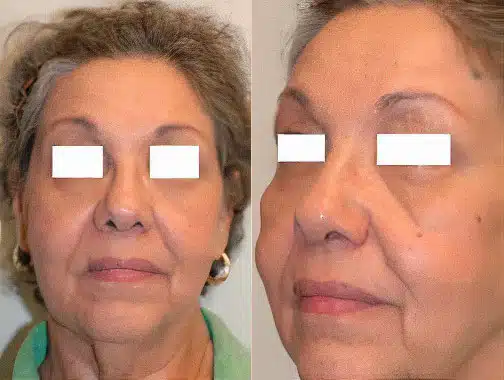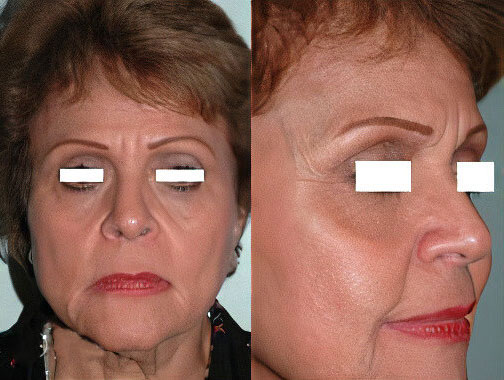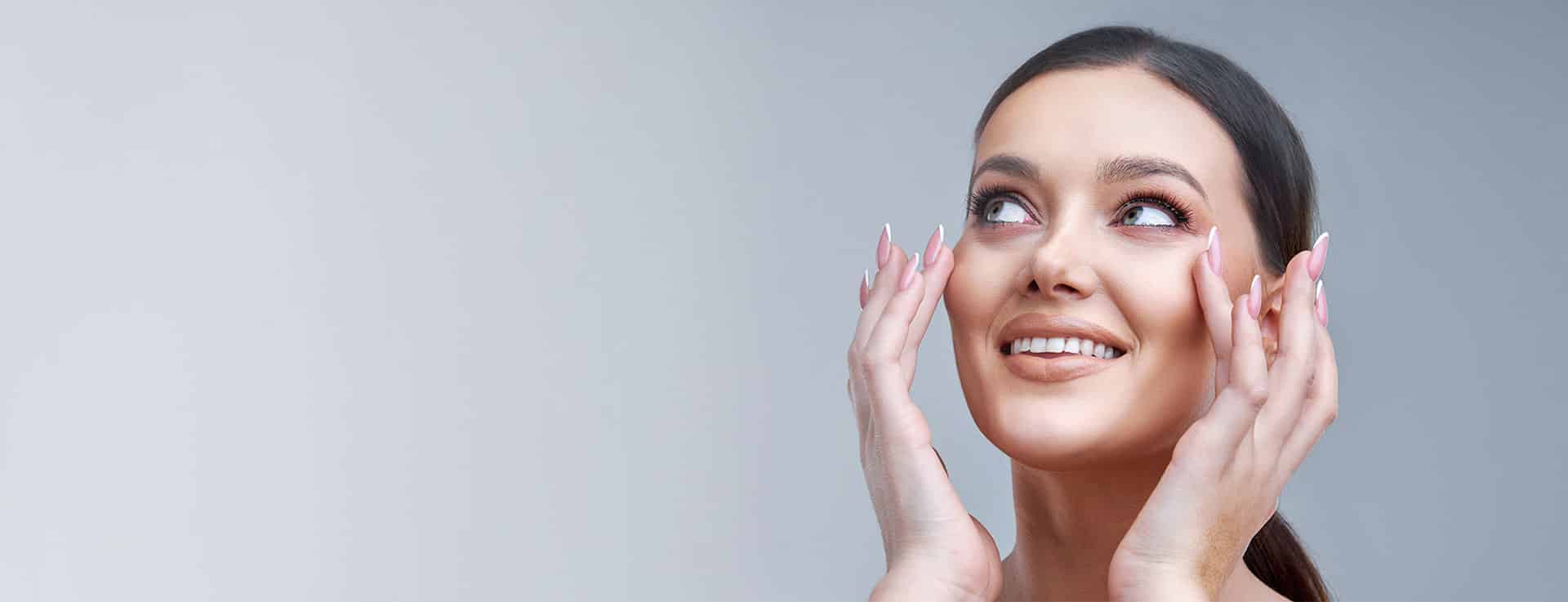Natural Rejuvenation with Facial Fat Transfer Benefits
Fat Transfer is an innovative technique that harnesses your body’s natural resources to rejuvenate and enhance your appearance. Utilizing your own fat, this procedure offers a natural and harmonious way to restore lost volume and contour the face and body. It’s a safe, effective alternative to synthetic fillers, providing long-lasting and aesthetically pleasing results.

Over time, the face begins to lose fat and volume. This gradual loss of facial volume can cause a significant increase in lines, creases, and wrinkles. More specifically, laugh lines, crow’s feet, and marionette lines are common complaints from patients beginning to see signs of aging.

Understanding Facial Fat Loss and Treatment Options
Various cosmetic treatments address facial aging, including injectable fillers, muscle relaxants (Botox), and surgical facelifts. Depending on your specific concerns, you may not require invasive surgery to achieve dramatic results.
Instead of undergoing a costly and complex surgical procedure, many patients are turning to less invasive treatments. Fat transfer is a popular, minimally invasive solution designed to restore natural volume to the face and take years off your appearance. Because the treatment involves injecting your own fat into areas with lost volume, fat transfer is a more natural alternative to synthetic fillers and may lead to less scarring.

Patient Testimonials: Real Stories, Real Results
The Aging Face: Benefits of Fat Transfer
As the face ages, there is both a descent and a loss of the facial fat. This usually begins during the mid-thirties and continues from then on.
One of the first signs is the development of the nasolabial folds, which are created by the descent of the midface (cheeks). As the face continues to age, the midface region undergoes a significant loss of volume.
Patients who develop loss of fat in this area tend to have a certain “flatness” in their cheeks. In addition, a sharp line demarcating the cheek can sometimes be seen in these patients. This line runs from the eyelid-cheek junction to the mid-cheek region.
The second area that can sometimes become pronounced with the loss and descent of the facial fat is the tear trough. The tear trough is a valley that runs from the inner corner of the lower eyelid to the junction between the cheek and the lower eyelid.
The descent and volume loss of the midface coupled with the lower eyelid “bags” accentuates the valley. The rim of the orbital bone can sometimes show through the thin eyelid skin.
The third area that can sometimes become pronounced with the loss of fat is the temple. Hollowness in this area can sometimes be seen in older individuals and can occasionally make the person seem older than their actual age.

Front and oblique pictures of a 58-year-old female. The midface demonstrates significant loss of facial fat and a descent of the malar fat pad. There is greater loss on the left side. The line running from the eyelid-cheek junction to the lower cheek is clearly seen. Also, observe how this line is continuous with the tear trough

Front and oblique views of a 56-year-old female. The tear trough is seen running from the inner corner of the lower eyelid to the eyelid-cheek junction. This is then continuous with the line running down the cheek.
Fat transfer is a procedure that Dr. Bustillo commonly performs to replace some of the volume lost in the face. The areas that are most successfully treated with fat transfer are the midface, tear trough, and temples. These are areas where the fat has a good blood supply and the fat tends to survive best.
The other areas where fat can also be transferred to are the nasolabial folds, marionette lines, and the pre-jowl areas. Because these areas do not have the best blood supply, the fat transferred has a lower survival rate in these areas. By placing fat in these areas, the hollowness is replaced by fullness, thereby rejuvenating the face.

Cost of Fat Transfer with Dr. Bustillo
The cost of fat transfer surgery can vary based on the procedure’s complexity and the patient’s specific needs. Typically, the cost of a fat transfer with Dr. Bustillo starts at $4,000. This includes pre-operative visits, anesthesia fees, surgical fees, and post-operative care. Discussing all potential costs during your consultation is essential to understand the financial commitment involved. Financing options may be available for those who qualify.
Questions about your procedure?
Schedule a consultation with Dr. Andres Bustillo.
The Facial Fat Transfer Procedure
The procedure can be performed either in conjunction with other facial rejuvenation procedures or by itself.
The fat transfer procedure can be performed with either IV sedation or general anesthesia. The procedure takes approximately one hour. The process involves three separate parts.
First, the fat is harvested or obtained with a small liposuction cannula. It can be taken from the abdomen (via a small incision hidden inside the belly button) or from the flanks.
The fat is then processed and separated from the body fluids by centrifuging (spinning) it.
Finally, the fat is placed into the various areas of the face with very small blunt needles. The majority of the procedure time is spent placing the fat in the various facial compartments through many small passes underneath the skin. The fat is placed at various depths into the facial tissues.

Ideal Candidates for Facial Fat Transfer in Miami
Candidates are healthy men and women who have experienced facial fat loss. They should have enough fat for harvesting and must have realistic expectations for the results of the procedure. Smokers will need to quit in advance of the surgery to be candidates.
Dr. Bustillo believes that all patients who are considering a facial rejuvenation procedure should at least ask their surgeon about fat transfer. While there are many patients that do not need it, many more may benefit from it. The huge success in the facial filler market clearly proves that volume replacement improves aesthetics and rejuvenates the aging face.
Recovery Process After Facial Fat Transfer
Post-operatively, the face swells for about seven days. The swelling then gradually decreases.
Patients who have the fat transfer as a stand-alone procedure are usually able to return to daily activities and work for about seven days. Patients who have the procedure in combination with other procedures may have a longer recovery depending on the other procedures performed.
Several weeks after the procedure, as the swelling decreases, the patient may feel that he or she might have lost some of the volume. This is normal, as this is the period where the swelling disappears and the fat grafts are just starting to regenerate. After approximately two months, the fat grafts begin to take and the volume is replenished.
Related Articles
Why Choose Dr. Bustillo for Your Facial Fat Transfer?
Dr. Bustillo is known as a facial aesthetics authority in Miami. He is a double board-certified plastic surgeon with over 20 years in practice and understands how to bring out the best in his patients. He is known for offering natural-looking results from both surgical and non-invasive procedures, prompting his patients to come back again and again.
- Castle Connolly Top Doctor for more than 10 years
- American Board of Facial Plastic and Reconstructive Surgery
- American Board of Otolaryngology-Head and Neck Surgery
- Facial Plastic & Reconstructive Surgery Fellowship at The New York University
- Otolaryngology – Head & Neck Surgery Residency at The University of Miami, Jackson Memorial Hospital
- General Surgery Internship at The University of Miami, Jackson Memorial Hospital


